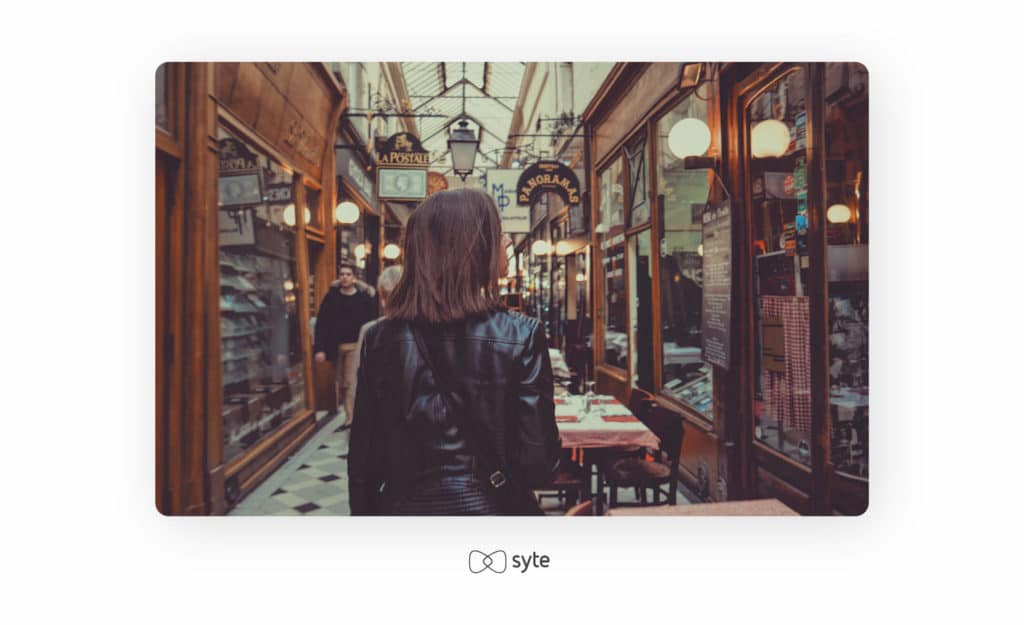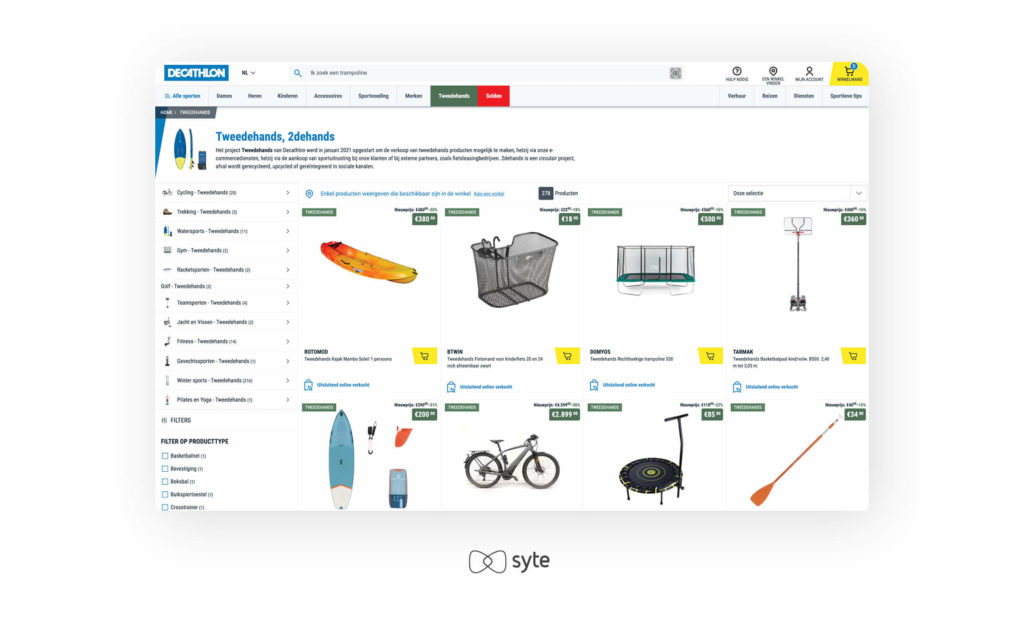eCommerce shopping comes with a host of benefits for consumers. It provides a single point of access to a large inventory of products, makes it easy to search for and compare items, and, as evidenced by the pandemic-induced eCommerce boom, fulfills consumers’ desires for immediacy from the comfort of their homes.
Even with this laundry list of perks, eCommerce has yet to replicate the visual nature of physical shopping. There’s something incomparably visceral and sensory about viewing items as you move through a store that makes the in-person shopping experience more engaging for shoppers. And, despite retailers’ investments in omnichannel technology, most still overlook the importance of the visual experience in the customer journey.

In this article, we’ll provide six strategies for creating an equally satisfactory visual experience online.
Why Shoppers Still Gravitate to Physical Stores
Nearly half of shoppers (48%) still prefer to shop in-store over buying online, according to Raydiant’s “State of the In-Store Experience” report. Of those who prefer in-person shopping, most (35%) say it’s because they simply “enjoy the experience,” while 24% say they want to interact with products before they purchase them.
The visually immersive experience of shopping is one of the main reasons that browsing through physical stores is so enjoyable. It’s also a primary way of interacting with products, which is essential to many people’s purchasing decisions.

The way you navigate through a store is determined by what you see, what draws your eye, and what captures your attention. From the moment you enter a shop, you immediately start scanning your surroundings. The items, displays, or areas of the store that naturally catch your eye draw you in further. As your gaze drifts over the products in your view, the entire atmosphere of the store — including signs, mannequins, furniture, or the color of the walls — culminates in a visually-driven experience.

Of course, the size of a store and other factors such as department store wayfinding systems also impact shoppers’ visual experience. Sales associates are another factor in helping shoppers find the specific items and styles they’re looking for.
Leveraging the In-Store Visual Experience Online
Here are six ways to translate the visual nature of in-store shopping to websites and apps.
1. Visual Search
Visual search on your website and apps enables shoppers to identify the products they want in a way that feels most authentic to shopping in-store.
For many consumers, inputting a textual search query is a frustrating and fruitless experience. There is usually a disconnect between the way everyday consumers describe products and how most eCommerce sites tag items. Unless a shopper uses terminology that precisely matches product tags and descriptions, they may not find the items they’re searching for.
Visual search feels more like physically looking through products in a store, except it’s more efficient. It could be compared to showing a sales associate a photo of a black cowl neck dress, and then being directed to every similar item around the store.
2. Visual Navigation
As we mentioned above, the experience of moving through a store is highly visual because a shopper’s sense of navigation is driven by what they see and what they want to see more of. To create a similar navigation experience online, every touchpoint should have a strong visual element.
For example, drop-down menus displaying images that correspond to each category are one way to deliver an ample dose of visual inspiration. Another option is to have inspiration carousels that pop up once a shopper clicks on the search bar. Such features provide numerous visual routes for shoppers to discover the right products.

3. High-Quality Images
Nearly a quarter of shoppers (24%) want to interact with products before they buy them. Online, this is usually impossible, which is why it’s essential to provide shoppers with the ability to “super-zoom” and view products from multiple angles.
When determining what kinds of images to include, consider how shoppers would visually analyze the product if they were evaluating it in-store.
If it’s fine jewelry, they might want a close crop of the piece with a well-lit atmosphere shot from multiple angles. If it’s a wooden dining room table, they will want to see the fine grain of the wood, its finish, and smoothness, as well as the mise-en-scène of the furniture piece in an actual dining room.

4. Product Displays
The main objective of in-store product displays is to capture shoppers’ attention. Online, your product displays serve the same purpose and are also the door to far more products than could ever fit on one table or set of shelves in a physical store.
There are many ways to create displays online, such as promotions or collections. But how you arrange them and where they appear on your site can make a world of difference.
For example, your homepage is arguably the hottest real estate on your website or app. Think of this space as a virtual window display, where customers can gain a robust view of your catalog. By thoughtfully arranging these displays on your homepage, you can create a home base for endless product discovery.
You can place relevant collections at the top of category pages such as “Wedding Guest Collection” on the “dresses” page. Recommendation carousels, which appear to shoppers as curated and personalized displays, can also significantly boost visual engagement online.

5. Augmented Reality
Augmented reality (AR) is perhaps the most obvious way to replicate the visual experience of in-store shopping online. With AR technology and filters, shoppers can “try on” makeup, jewelry, sneakers, and clothes, allowing them to easily interact with products from the comfort of their homes. Home decor brands have lauded AR for its ability to simulate how furniture looks in a shopper’s actual home.
As AR matures and becomes normalized by social media, consumers are becoming well-acquainted with the technology. Embedding it into your website and app adds new layers of visualization for shoppers while creating innovative and engaging buying experiences.
Some brands and retailers are already racing for real estate in the metaverse, an online digital world inhabited by avatars. Although the metaverse remains an elusive, abstract concept for most shoppers, retail industry experts believe virtual shopping will become mainstream in the not-so-distant future. This represents a great opportunity for brands and retailers to offer highly visual and engaging shopping experiences.
Keep the Visual Experience Front and Center
Now that shoppers have the option to return to stores, many of them are choosing to do so. Of course, online shopping offers enhanced levels of convenience and access that in-person shopping often can’t match. But that alone won’t motivate consumers to prioritize eCommerce. By focusing current omnichannel tech investments on the visual experience, along with emerging innovations like AR and the metaverse, brands and retailers can make the online shopping experience far more visually engaging and delightful for shoppers.